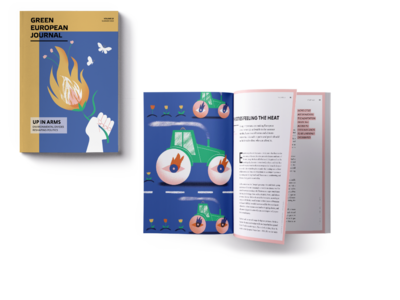Russian President Vladimir Putin likes to put forward a lot of reasons for his full-scale invasion of Ukraine, but rarely a classic imperialist thirst for resources. However, a desire to secure key resources could be one of the genuine reasons Russian troops marched into Ukraine in February 2022. Rare earth metals, vital in the transition to renewable energy sources, currently lie untapped in Ukraine’s subsoil. Ukraine is believed to have the highest recoverable supply of rare earths in Europe as well as one of the largest lithium reserves, valued at 3 to 11.5 trillion dollars.
Most of Ukraine’s rare earth reserves, including those of beryllium and niobium, are situated in areas partly or entirely occupied by Russia, mainly Zaporizhzhia and Donetsk, or close to them, such Kirovohrad. These deposits have the potential to make Ukraine a superpower in the energy transition. Instead, they currently seem to represent Ukraine’s “resource curse”, bringing the country conflict rather than prosperity.
By depriving Ukraine of its valuable reserves, Russia would simultaneously achieve several goals. It would expand its own rare earth resources, while eliminating a potential market competitor in the rare earth business. It might also thwart the EU’s long-term objective of moving away from fossil fuels, forcing the EU to continue and even increase its dependency on both Russia and China. The EU needs to understand this geopolitical nature of the energy transition and find adequate solutions.
Ukraine’s almost rise in the energy supply chain
The EU adopted its Renewable Energy Directive in 2018, announcing that renewables would represent at least 32 per cent of its energy portfolio by 2030. Despite this commitment, the EU was and remains almost completely dependent on China for its rare earths supply.
The European Green Deal further enhanced the need to find alternatives for rare earths. To reach climate neutrality by 2050, the EU will need 10 times its current rare earths supply to cover use in wind turbines and electric batteries.
Prior to Russia’s invasion, Ukraine had become a key candidate to contribute to achieving the Union’s ambitious goals. In 2019, the EU and Ukraine launched a Raw Materials Working Group, focused on sharing information on the critical raw materials supply chain. Shortly afterwards, in 2021, the EU entered a strategic partnership with Ukraine on raw materials.
This emboldened foreign investors’ interest in Ukraine’s deposits. For instance, Australian company European Lithium was in the process of securing two lithium deposits, in an effort to become Europe’s largest supplier.
Parallel to this budding EU-Ukraine collaboration, Russia was pursuing its own rare earth ambitions. Despite having the fourth-largest reserves in the world, Russia was falling behind in developing deposits, some of which are situated in the harsh eastern Siberian region, as well as its refining technology.
In 2020, Russia pledged around 1.5 billion dollars to become the largest producer of rare earths after China by 2030. Russian control of Ukraine’s reserves would advance this goal while allowing it to leverage more power over the EU’s and other international actors’ energy supply chains. In this, Russia could secure China’s support, given their growing partnership and their common goal of creating a new world order.
What does that mean for the EU?
A coordinated effort between Russia and China would leave the EU in a difficult position, especially because extracting rare earths in other countries with larger reserves, such as Brazil and Vietnam, is currently fraught with challenges.
These countries lack adequate processing and refining infrastructure, the construction of which would require sizeable investment and involve long lead times. The EU would also have to compete for these resources with other interested actors, such as the United States and Australia, who need rare earths to maintain their economic stature. Faced with resource tensions globally, an essential starting point for the EU is recycling existing resources and using new materials more efficiently.

